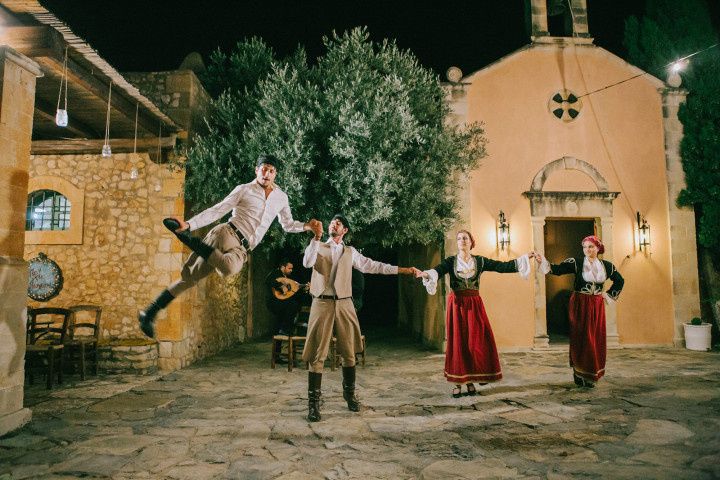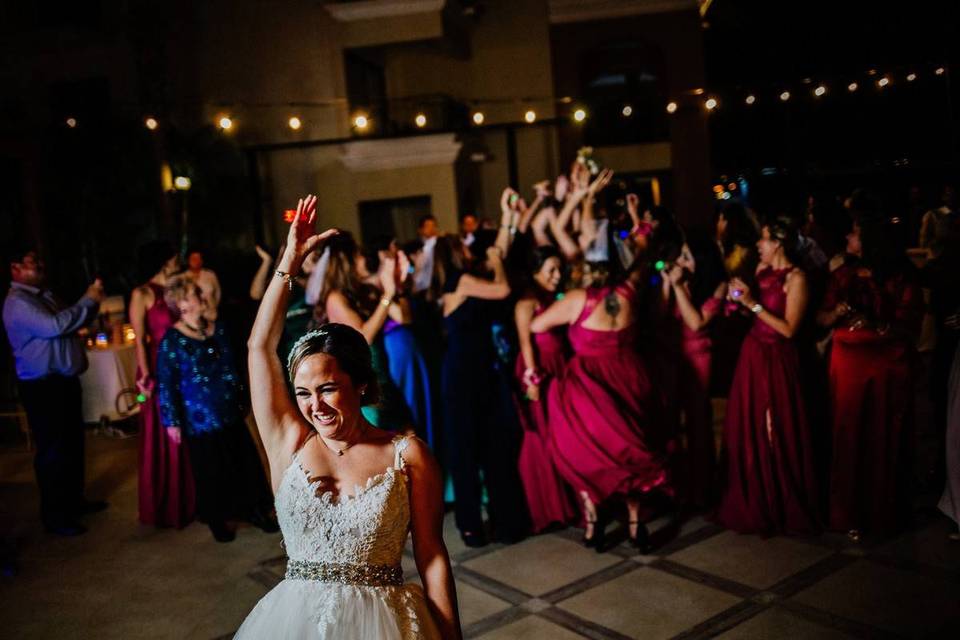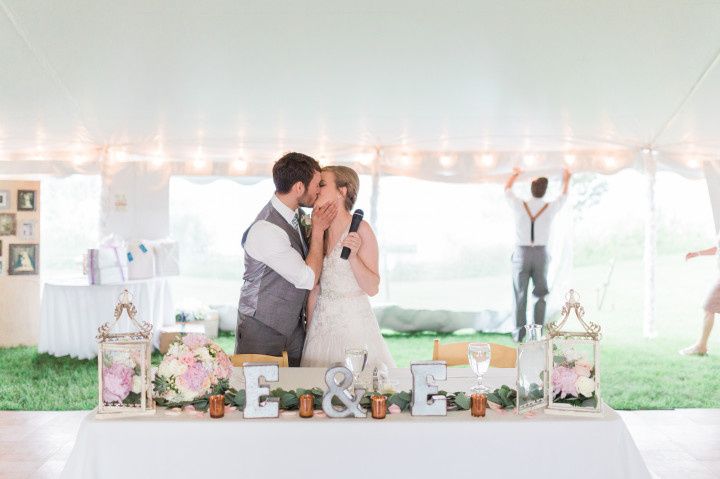9 Latin American Wedding Traditions Couples Need to Know
Learn more about these rich Latin American wedding traditions, from padrinos to el lazo, and many more.
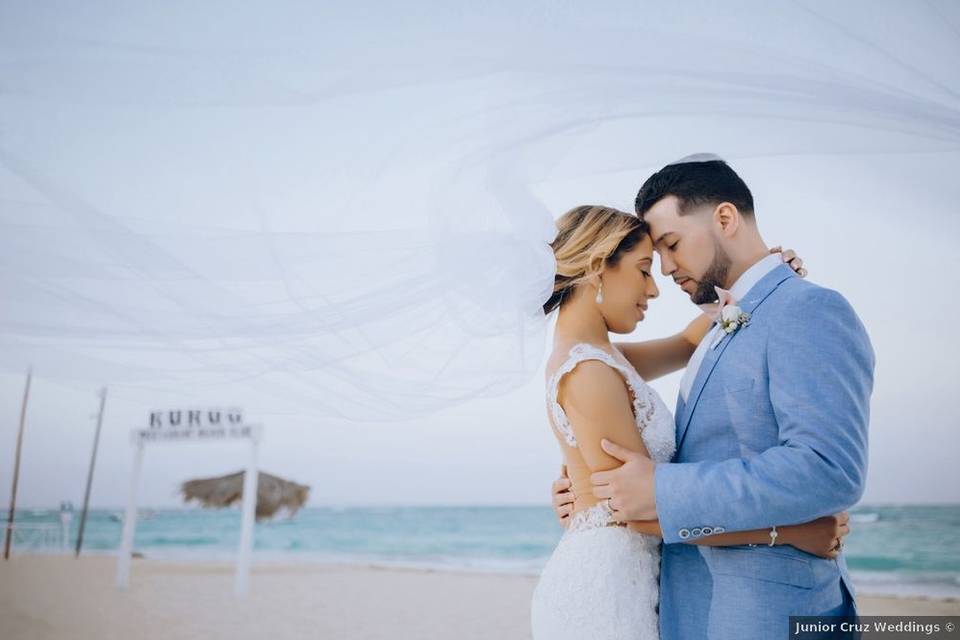
For many couples, certain traditions shape their vision of their wedding day. But what elements immediately come to mind depends on their heritage and the culture they were raised in. When it comes to Latin American wedding traditions, there are a variety of beloved elements that can be incorporated throughout the day. These vibrant rituals enrich nuptials and despite what some may realize, these traditions vary by country.
“This might come as no surprise, but Latinos love to celebrate in a big way. We have a passion for life and community that brings our weddings to a new level of fun and celebration,” says Latinx wedding expert and editor in chief of Belle The Magazine, Alejandra Baca. “Latinx is a multicultural, dynamic and diverse group. We come from different countries with different accents and different history. And yet we all share a vibrant and rich culture, our appreciation for family and our flavorful way of life.”
Baca explains that while there are some shared commonalities in traditions, rituals vary depending on the couple’s country or countries of origin, so not all Latin American weddings are the same.
“Not every Latinx wedding has a Mariachi band or tequila (this is usually only a Mexican thing),” she says. “So if you are attending a Latinx wedding be prepared to party, but go with an open mind without preconceived notions and ready to learn about the couple’s colorful culture.”
From the lazo and the arras to separate civil ceremonies and the padrinos, Baca breaks down Latin American wedding traditions across countries.
Padrinos — Godparents/Sponsors
Traditionally, couples didn't have a maid of honor or best man and instead had a Padrino and Madrina. These are specially chosen people who play an important role in the couple’s lives, explains Baca, although the exact translation is godparents. In most cases, the padrinos sponsor or buy the lazo and the arras. “It is a tradition to sponsor these accessories, but modern couples sometimes buy these accessories themselves and have padrinos and madrinas as a mere symbolism,” she says. “Padrinos of lazo and arras are usually a must, but some couples include other types of padrinos as well,” she says. Some modern couples have the best man, the maid of honor, bridesmaids, or groomsmen play the role of padrinos in their wedding ceremony, others keep the padrinos and the wedding party separate.
Countries: Colombia, Dominican Republic, Mexico, El Salvador, Argentina
Las Arras — Marriage Coins
This is an old Latin American wedding tradition that hasn’t changed throughout the years and involves the arras, or 13 gold coins that are often a gift from los padrinos y madrinas, Baca explains. “The groom presents these coins to his bride as a gift during the ceremony after the priest or pastor blessed them,” she says. “This tradition signifies the groom's commitment to supporting the bride and serves as a representation of Jesus and his 12 apostles to show that their relationship to God is crucial to the success of their marriage.”
Countries: Mexico, Dominican Republic, El Salvador, Guatemala, Honduras, Nicaragua, Panama, Puerto Rico, Venezuela
El Lazo — Wedding Lasso
El lazo is a traditional unity ceremony performed across generations that takes place after the exchange of vows using a lasso to join the couple. “The lasso could be anything, but it’s typically an oversized rosary or a silk cord,” explains Baca. “Two people, usually a padrino and a madrina, members of the family or important people to the couple will wrap the 'lasso' around the couple in a figure eight symbolizing the unity between them.”
Countries: Mexico, El Salvador, Guatemala, Honduras, Nicaragua, Panama, Puerto Rico).
A Civil Ceremony
Prior to the wedding day, couples become legally wed during a civil ceremony that’s attended by only close friends and family. “The civil ceremony is usually a legal requirement in some Latin American countries, as some governments don’t accept the religious ceremony as a legal marriage,” says Baca. “But Latinx couples in the US have adopted this as a tradition, having a civil ceremony before the big day followed by a small dinner or get together.” However, the religious ceremony is typically still the main occasion followed by the reception.
Countries: Ecuador, Chile, Mexico, El Salvador, Guatemala, Honduras, Nicaragua, Venezuela
The Reception
The reception is known to be a big dance party that includes traditional music like cumbia, merengue, salsa, and a mariachi band (Mexico only) with nonstop dancing, shares Baca. “The food and drinks served at the reception play an important role for many couples who usually choose to include at least one traditional dish, beverage, or dessert from their country of origin,” she adds. “Nowadays, Latinx couples incorporate a mix of traditional Latin music with American classics and new Latino rhythms such as bachata and reggaeton.”
All Countries
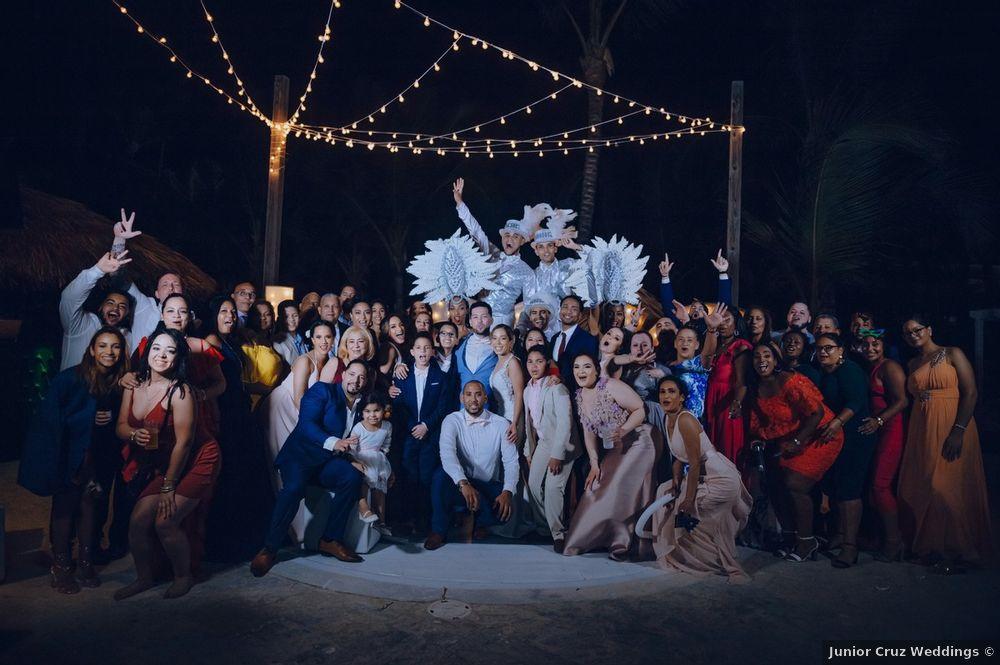
La Hora Loca — The Crazy Hour
This generally comes later in the night during the reception and Baca describes it as a party within a party! To pump up the spirit, some couples hire professional entertainers, stilt walkers, samba dancers, or drummers. “Other couples bring out all the fun props to share with their guests and continue the party,” she says. “This is a relatively new tradition in both Latin American countries and the Latinx community in the US.”
Countries: Colombia, Paraguay, México, Perú, Venezuela
Wedding Party
Traditionally, couples didn’t have a wedding party outside of a ring bearer and/or flower girl, explains Baca. However, she says that this tradition has changed drastically for Latinx couples, both inside and outside of the US, as many opt to include friends and family in a bridal party. “Having bridesmaids and groomsmen is a must for modern couples,” she says.
Countries: Ecuador, Brazil, Mexico, Venezuela, Argentina
El Baile Del Billete — The Money Dance
During this part of the reception, money is “pinned” on the bride and/or groom in order to get a chance to dance with them. “Depending on the amount of guests wanting to dance with the bride or groom, the money dance can last four to five songs,” she says.
Countries: Costa Rica, Cuba, Mexico, El Salvador
Rice
After the church or civil ceremony, guests toss rice or bird seeds as the couple exits, symbolizing fertility and good fortune. “Modern Latinx couples have substituted the rice and bird seeds for confetti, rose petals, etc,” she says.
Countries: Nicaragua, Mexico, Argentina
How couples can incorporate these Latin American wedding traditions into their own nuptials
As brides- and grooms-to-be navigate wedding planning, Baca recommends not worrying about featuring every single ritual. “Choose those Latin American wedding traditions that speak more to you and your partner, and who you are as a couple,” she says.
However, you may want to give family a heads up if you decide to veer away from these traditions to avoid any wedding-day surprises. “Having everyone on the same page is essential. And by everyone, I mean your parents and grandparents, as well,” she says. “We know how important family and family-approval is for Latinx folks, so make sure your loved ones are informed on the traditions you decided to incorporate on your wedding day and the reason why.”
But another easy way to make the Latin American culture shine in addition to partaking in these beloved traditions is by also honoring it with the small details. “With traditional food, drinks, music, and touches of Spanish or Portuguese here and there ⏤ signs, cake toppers and invitations are good places to start,” she says.
Traditions' importance today
For some couples, including some of these rituals is essential in order to pay respect to their heritage as well as their family.
Family is very important for the Latinx community, explains Baca, and the parents’ and grandparents’ approval is crucial for many couples. “The Latin American wedding traditions not only allow couples to connect with our origins, but they also allow couples to make their family proud while creating a commonality and a sense of unity for their guests,” Baca says. “Assimilation has been an issue many Latinos had to face, but in the last decade or so I have seen more and more Latinx couples embrace their traditions and heritage.”
As wedding trends continue to encourage couples to make their weddings a reflection of themselves and their personalities, she’s noticed more couples leaning into their cultures and infusing special nods throughout their celebrations. “Heritage is a big part of who we are and there is no more important occasion to embrace every aspect of who you are than your wedding day,” she adds.

